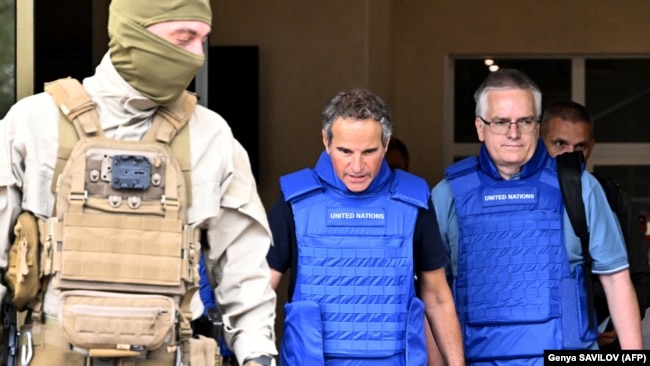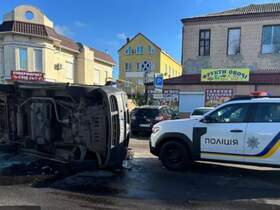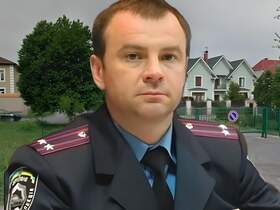IAEA seems to ignore the nuclear blackmail of Russian occupiers at the ZNPP

IAEA seems to ignore the nuclear blackmail of Russian occupiers at the ZNPP
At the end of 2024, Russian invaders intensified their actions around the captured Zaporizhzhya nuclear power plant, all units of which are currently in a state of "cold shutdown."
The Joint Stock Company "Operating Organization of Zaporizhzhya NPP" was granted a Russian license in the field of nuclear energy use, and the construction of a new power transmission line from Rostov to Enerhodar has begun. These and other actions may indicate the intentions of "Rosatom" to launch the power units.
The feasibility of resuming operations at Zaporizhzhya NPP and its potential dangers were investigated by the Center for Investigative Journalism.
In January 2025, construction began on high-voltage power line supports from the Rostov region toward Enerhodar. Currently, preparations for the installation of supports are taking place in the occupied part of Zaporizhzhya region near the village of Osypenko in the Berdyansk district. The work is being carried out at a very rapid pace.
"This kind of infrastructure project could allow the Russians to start production that requires large electricity consumption and facilitate the banal theft of electricity from the NPP," writes Petro Andryushchenko, head of the Center for the Study of Occupation.
The intentions to launch the power units of the captured Zaporizhzhya NPP, the largest nuclear power plant in Europe, have been openly stated by the occupation leadership from the beginning of the major war, albeit with the note "when the security situation allows." The security situation at the NPP has not changed significantly since then, but a series of events at the end of 2024 indicate a high probability of resuming the operation of at least one power unit in the next two years.
In December 2024, "Rostekhnadzor" completed the procedures for licensing the activities of Zaporizhzhya NPP in the field of nuclear energy use and issued a license to the Joint Stock Company "Operating Organization of Zaporizhzhya NPP," whose sole shareholder is the "Rosenergoatom" concern, part of the "Rosatom" state corporation, for the "placement, construction, operation, and decommissioning of nuclear installations, radiation sources, and nuclear material and radioactive substance storage facilities."
"This is the first license from the Russian Federation, issued by "Rostekhnadzor" for 10 years in full compliance with Russian Federation legislation in the field of nuclear energy use," commented the occupation director of Zaporizhzhya NPP Yuriy Chernychuk.
Immediately afterward, Serhiy Kyrienko, the first deputy head of Putin’s administration, visited Zaporizhzhya NPP, identifying the preparation of the units for a generation mode and obtaining an operating license for the first power unit in 2025 as key tasks.

Serhiy Kyrienko at Zaporizhzhya NPP. December 2024. Photo: video screen capture from social media
"Currently, all six units of Zaporizhzhya NPP are in a state of ’cold shutdown.’ It is important to carry out all necessary work to obtain a license for operating unit No. 1 according to Russian legislation requirements," Kyrienko emphasized.
The occupation leadership plans to complete the process of obtaining Russian licenses for operating all six power units by 2028.
They also plan to replace foreign equipment at Zaporizhzhya NPP with Russian equipment. This might be prompted by the lack of components for existing equipment or insufficiently qualified personnel.
According to Petro Kotin, head of Energoatom, about 5,000 nuclear workers from the temporarily occupied Zaporizhzhya NPP are currently employed in other Energoatom divisions. Russia cannot compensate for such a large loss of personnel.
Russia plans for Zaporizhzhya NPP, after launching all power units, to provide energy not only to the occupied territories of Ukraine but also to some regions of the Russian Federation.
"At least two units can fully supply energy to Crimea. The plant will not operate alone. It will be part of one large system. There will definitely be enough for all new regions and Crimea. Even if we eventually restore all the industry that was in these regions and put out of service as a result of the war, our station will be enough and even have surplus," commented Chernychuk to the state news agency TASS.
The realism of Russian declarations about launching Zaporizhzhya NPP power units, located virtually on the front line, was commented on by Olga Kosharna, an expert in the field of nuclear energy and co-founder of the NGO "Anti-Crisis Expert Nuclear Center of Ukraine," upon request by the NRC.
Olha Kosharna identified two main challenges that, once overcome, would allow Russia to launch Zaporizhzhya NPP: water supply and integrating the plant into the unified Russian power system.
The Russians complicated the water supply situation for themselves by blowing up the Kakhovska HPP dam and are now trying to compensate for the losses.
"Full operation of all six Zaporizhzhya NPP power units requires a significant amount of water for cooling. To replenish the cooling pond and pools that were previously fed from the Kakhovska reservoir, the Russians, without any assessment of impact on nuclear and radiation safety, drilled eleven wells. Water extraction happens faster than underground water can replenish. As a result, the hydrogeological environment under the industrial site of Zaporizhzhya NPP has already changed, showing signs of soil slippage and a loss of strict verticality in structures," the expert reported.
There are plans to build a new pump station on the banks of the Konka River, which was under the Kakhovska reservoir but has returned to its historical course after the Kakhovska HPP was blown up and now runs alongside the Zaporizhzhya NPP cooling pond.
In Kosharna’s assessment, theoretically, the Russians could bring one power unit into operation even with the current water supply but must first connect the NPP to the Russian unified power system.
"Rosatom" and "Rosenergo" planned to do this back in 2022, using a high-voltage line from Crimea to the "Kakhovska" substation, restored in July 2022. However, the "Dzhankoyska" station, key to the reconnection scheme, burned down in August 2022 after a ’strong clap,’ as reported by Russian media.
Currently, Zaporizhzhya NPP draws electricity for its internal needs from Ukraine’s unified power system, but due to constant Russian shelling of the frontline territories in the free part of Zaporizhzhya region, the plant has already experienced eight full blackouts. Thus, without building additional power supply lines, the operation of the plant cannot be resumed.
"Bringing even one power unit to minimum controlled power means starting a chain reaction and generating hazardous volatile radionuclides, which are not present in the reactors in cold shutdown. Hence, the Russians will once again use Zaporizhzhya NPP for nuclear blackmail with military goals," Kosharna believes.
Neither Energoatom nor the IAEA has reacted to Russia’s declarations and actions regarding resuming operations at Zaporizhzhya NPP. IAEA Director General Rafael Grossi plans to visit Russia and Ukraine shortly, and the latest statement regarding Zaporizhzhya NPP on the organization’s website reports numerous explosions at close and medium distances from the plant, external power supply issues, and notes the presence of a Support and Assistance Mission team at the site.

Head of the International Atomic Energy Agency (IAEA) Rafael Grossi (center). Zaporizhzhya, September 1, 2022
Author: Ivan Bilyi
Topics: RostekhnadzorYuriy ChernychukPetro KotinSerhiy KyrienkoEnergoatomRosatomRussian Armed ForcesOccupationRafael GrossiIAEAZaporizhzhya NPP

Comments:
comments powered by DisqusЗагрузка...
Our polls
Show Poll results
Show all polls on the website











